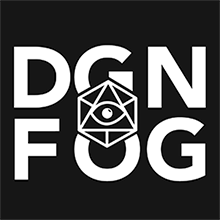The Ascension of the Raven Queen (myth)
In an age of terror, when the dead walked the earth and elf, dwarf, halfling, and human huddled united by their fear of the encroaching darkness, there lived a powerful and beloved sorceress. From her great opal tower she watched over the surrounding lands and held the terror of the night at bay. And while she craved neither fealty nor praise, the people privately called her their queen. The sorceress never left her opal tower, and she lived alone but for a single companion, Cassandra of the Vale. Cassandra was witty, quick to anger, and a gifted magician in her own right. The two women adored one another, and spent long hours in each other's company. The sorceress was happy, and the tower's defenses were strong. The people felt safe for the first time in living memory.
One day, Cassandra strayed too far from the safety of the tower, and the darkness took her. The sorceress sealed her tower in anguish and stood as a statue until dust settled across her skin, moths ate at her clothes, and her hair grew long and tangled. When The Golden Jester saw the sorceress's grief, he was displeased, and he scaled the walls of the opal tower to console her. He blew the dust from her skin, mended her clothes, and cut her hair, but she would not move. He played the jauntiest music, but she would not dance. He presented her with the most exquisite feast, but she would not eat. He poured her the finest wine, but she would not drink. He told her the cleverest jokes, but she would not laugh nor smile.
"Why do you grieve so," he asked at last, "when the people below celebrate the escape of death?"
"Because I know what they do not," she replied. "The Destroyer holds shut the gates of death, and my beloved will never rest."
The trickster smiled a knowing smile, as only a trickster can. "Then let us free her, you and I. We can free them all, in fact, but you must lead me through the veil." The Laughing God produced a vial of liquid death, and the sorceress drank. As her life faded away, the trickster shrouded himself in his cloak of shadow and followed her silently through the veil of death.
As she passed through the veil, the sorceress saw for the first time the Endless Fields of restless dead crying out for peace, and the sound of their suffering pierced her soul. She came then before the Lord of Destruction himself, his aspect great and terrible as he looked out over his domain with his staff of bone and iron . When the Destroyer saw the sorceress, he was struck by her beauty and became intrigued.
"Most of your kind cling desperately to their pitiful mortal lives," the dread god said. "Yet you drink willingly from the cup of death and come to me of your own accord. Why?"
"You know that I am a learned woman," she replied, knowing of the Destroyer's pride. "I have read of m'lord's terrible power and glory, and I could no longer wait to pay fealty to your greatness myself."
The sorceress's show of faith was pleasing to the Lord of Destruction, so he set her at his right hand and in his confidence, and the Laughing God was pleased. The trickster then passed over the Endless Fields, and from each lost soul he collected a single strand of hair. For seven days and seven nights he labored in secret, weaving. And when he was finished, he had fashioned a net that could snare any being. And he waited.
One day, the sorceress asked her lord, "why do you remain here within your palace and never walk amongst the souls you rule?"
"Because there are many enemies outside these walls who would see me fall," he replied.
She responded cleverly, "But what can one so great as m'lord have to fear from such enemies?"
"And what reason could one so great as I have to walk amongst those beneath him?" he countered.
"If I am to be truly yours, your subjects must know that I am yours," she answered. "My pride demands nothing less."
She led him outside, and he stood on the steps of the palace overlooking the Endless Fields. She went down to the edge of the fields, beckoning him, and he followed reluctantly. Finally, she walked out into the crowd of souls, demanding that he follow, saying "all of your subjects must see that I am yours."
The Lord of Destruction walked into the crowd haughtily, and the Laughing God threw the net of death upon the destroyer's head, snaring him before all his subjects. The trickster mocked and jeered at him, and all the Endless Fields laughed at his expense. The Destroyer was enraged, and struggled to free himself, but the tricksters hands were too clever, and the net too strong. The sorceress took the Destroyer's staff and clove it in two. The Deathlord's power was broken, dominion over the realm of the dead passed to her, and she threw wide the doors of death.
The Sorceress then looked out over the sea of lost souls. She saw her beloved in the form of a great black bird, and her heart was broken. "Cassandra must go on to fly free for eternity," she said, "while I remain here to guide these souls to their rest. One day, we will meet again."
And so it was that the great sorceress took on the mantle of The Raven Queen, and to this day she comforts the souls of our brothers, sisters, mothers, and fathers when they leave this world, and guides them to their eternal peace.
This is one common legend of the Raven Queen's origin told by the common people. Among legitimate scholars, there are many theories and precious little evidence concerning the true origins of the Mistress of Death, though it is generally agreed that she was mortal until near the end of the Age of Darkness when she ascended to godhood and overthrew the Unliving Prince as lord of the dead—not the Destroyer, which is one notable historical detail this version gets wrong.










Comments